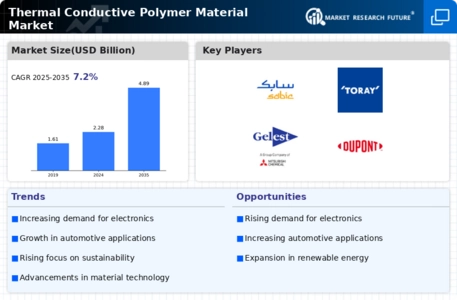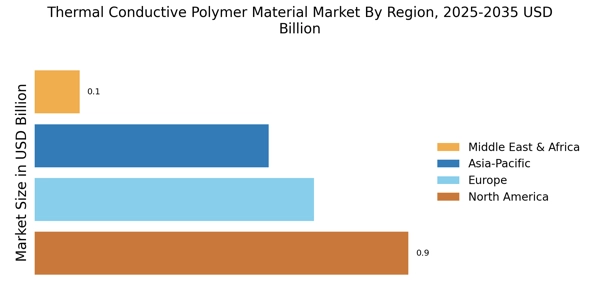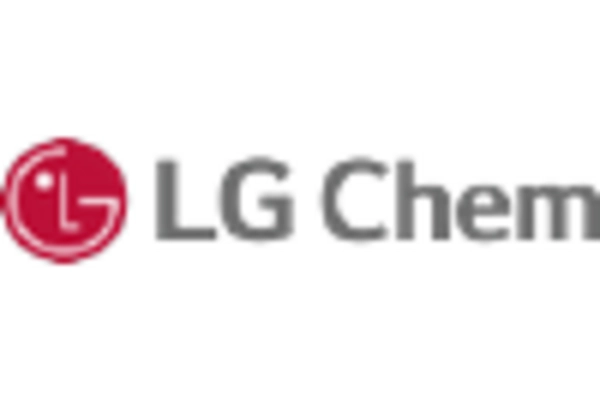Expansion in Automotive Sector
The Thermal Conductive Polymer Material Market is significantly influenced by advancements in the automotive sector, particularly with the rise of electric vehicles (EVs). As EVs become more prevalent, the need for effective thermal management solutions is paramount to ensure battery efficiency and safety. Thermal conductive polymers are being integrated into various automotive components, including battery packs and power electronics, to enhance thermal performance. The automotive segment is projected to account for over 30% of the total market share by 2025, indicating a robust demand for these materials as manufacturers strive to meet stringent performance and safety standards.
Growth in Renewable Energy Applications
The Thermal Conductive Polymer Material Market is poised for growth due to the rising adoption of renewable energy technologies. As the world shifts towards sustainable energy sources, the demand for efficient thermal management solutions in solar panels and wind turbines is escalating. Thermal conductive polymers are being utilized to improve the thermal performance of these systems, ensuring optimal energy conversion and efficiency. In 2025, the market for thermal conductive polymers in renewable energy applications is expected to witness a compound annual growth rate of around 8%, reflecting the increasing integration of these materials in energy-efficient technologies.
Regulatory Support for Energy Efficiency
The Thermal Conductive Polymer Material Market is also being propelled by regulatory support aimed at enhancing energy efficiency across various sectors. Governments are implementing stringent regulations that encourage the adoption of materials that improve thermal management in industrial applications. This regulatory landscape is fostering innovation and investment in thermal conductive polymers, as companies seek to comply with energy efficiency standards. By 2025, it is estimated that the market will grow by 15% due to these supportive policies, which are designed to reduce energy consumption and promote sustainable practices in manufacturing and construction.
Increasing Demand in Consumer Electronics
The Thermal Conductive Polymer Material Market is experiencing a notable surge in demand, particularly within the consumer electronics sector. As devices become more compact and powerful, the need for efficient thermal management solutions intensifies. In 2025, the market for thermal conductive polymers in electronics is projected to reach approximately USD 1.5 billion, driven by the proliferation of smartphones, laptops, and wearable technology. These devices generate significant heat, necessitating materials that can effectively dissipate thermal energy. Consequently, manufacturers are increasingly adopting thermal conductive polymers to enhance device performance and longevity, thereby propelling the market forward.
Technological Innovations in Material Science
The Thermal Conductive Polymer Material Market is benefiting from ongoing technological innovations in material science. Researchers are developing advanced formulations that enhance the thermal conductivity of polymers while maintaining their lightweight and flexible properties. These innovations are crucial for applications in sectors such as aerospace, electronics, and automotive, where performance and weight are critical factors. The introduction of new polymer blends and composites is expected to drive market growth, with an anticipated increase in market size by approximately 10% annually through 2025. This trend underscores the importance of continuous research and development in expanding the capabilities of thermal conductive polymers.


















Leave a Comment